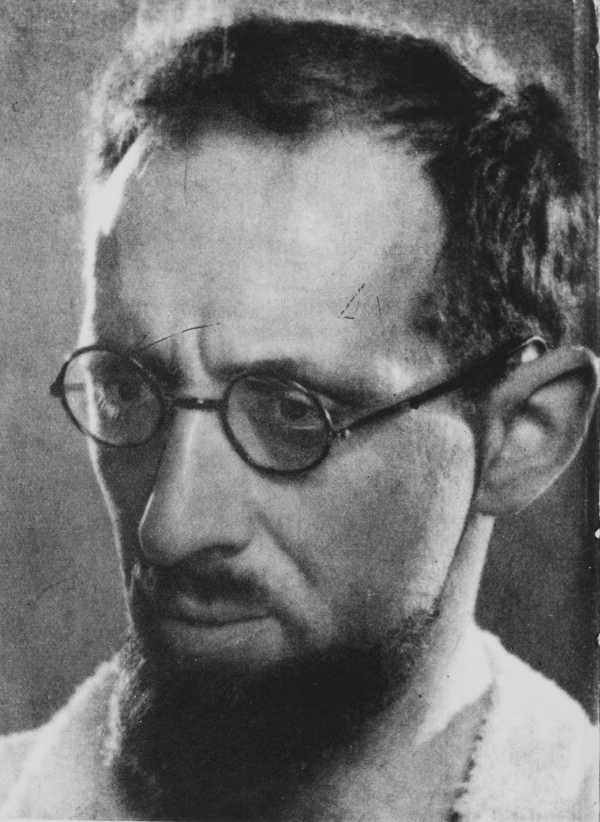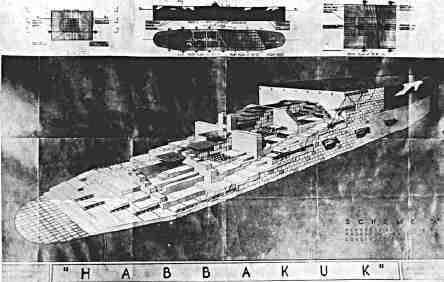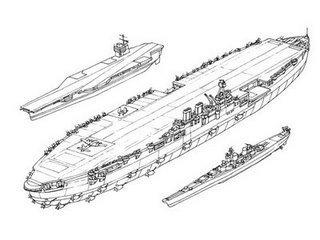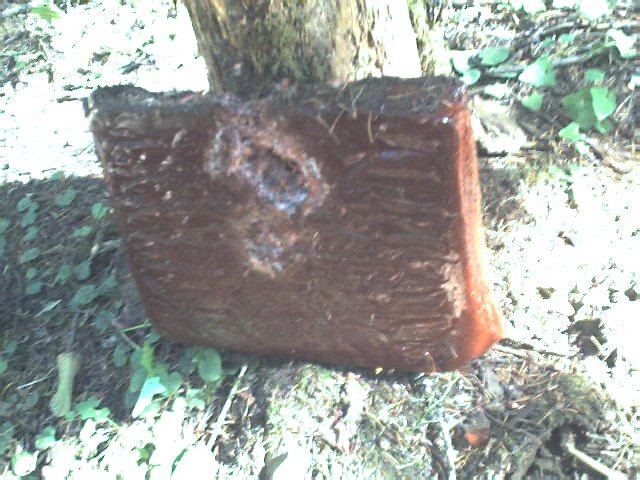Two million ton aircraft carrier
Habakkuk, the two million-ton aircraft carrier

In 1942, at perhaps the darkest moment of the Atlantic Battle, while herds of wolves were sinking millions of tons of allied ships without anything that seemed capable of effectively fighting them, the English journalist and inventor sui generis Geoffrey N Pyke, at the time assigned to the office of the Head of Combined Operations, Lord Mountbatten, came up with the idea of using suitably levelled icebergs as floating airports to allow air escorts of convoys across the Atlantic. The airport would, of course, melt sooner or later, drifting southwards, but Pyke believed that both processes could be restricted by covering the ice with a substance that slowed down liquefaction, and equipping it with engines that would counteract sea currents. What's more, an iceberg would have been practically invulnerable to torpedoes, and a possible naval bombardment would not have done much more damage than in a normal airport, damages that could still be repaired in short, pumping sea water and chilling it to turn it into ice that the bulldozers would then level.
Mountbatten spoke about the idea at Winston Churchill, who was enthusiastic about it. Thus the Project Habakkuk was born (often wrongly written Habbakuk), from a verse in the Bible,"See among nations, look, marvel and be amazed! For I am about to do a work of art that you would not believe if they were to tell you" (cf. Abacuc, 1:5, Bible Luzzi version, the most faithful in the Italian translation at King James). After several passages, the project turned into an ice carrier of 2,000 feet (610 meters long), a width of 300 (91) and a draught of 40 (12) for a displacement of more than two million tons.

The enormous size of the ship caused many problems. Ice is brittle and deformed by pressure, holding together a mass of that size could be a feat (whoever has seen an iceberg from the truth, knows that it loses pieces continuously. For the "berg" is not a problem, for a military structure yes). In search of a solution, a prototype was built in the Canadian province of Alberta, far away, it was hoped, with prying eyes: a wooden skeleton of 60 feet by 30 (18 meters by 9 meters), filled with blocks of ice and covered by an insulating sheet. A cooling system similar to that of a freezer would send frost freeze air through a network of thin tubes to keep the structure temperature below zero. The whole thing was then descended into a lake.
Meanwhile (we are now at the beginning of 1943), two researchers from the Polytechnic Institute of Brooklyn, New York, discovered by chance that mixing sawdust (or other fibrous materials such as cotton, or newspaper paper) and water, in a proportion of 14 to 86, and bringing everything to less than forty, could create a substance that could float even though it was much more resistant than ice. The material was called pykrete, or pykecrete, Pyke contraction and concrete, cement. Subsequent experiments showed that it withstands pressure, heat and, to some extent, even explosives, it could be cut with normal industrial tools and melted much more slowly than ice. It is said that Mountbatten demonstrated to Churchill the resistance of the pykrete by throwing a piece into the tea kettle of the Prime Minister. It seemed done well to solve all the problems of Habakkuk.

Habakkuk, in the middle, compared with a modern CV and a battle ship of the time.
Despite its apparent miraculous properties, the pykrete could not solve other problems that had arisen in the meantime. The Habakkuk aircraft carriers would have cost, it was estimated, no less than 100 million dollars (more than one battle ship of the Iowa class, to be sure), and its construction posed engineering problems of not easy immediate solution, as well as material availability: cellulose, at that time, was scarce, unlike steel. On the other hand, the autonomy of the allied planes was increasing significantly, allowing them to be escorted directly from the base in Canada, Iceland and Scotland, not to mention the fact that the Americans were producing hundreds of escort aircraft carriers by converting commercial ships. All this made Habakkuk appear a waste of resources. The project was cancelled at the beginning of 1944, before construction of the first aircraft carrier began. The pikrete ended up forgetting the inventions without a practical outlet.

A pykrete sample used for ballistic tests.